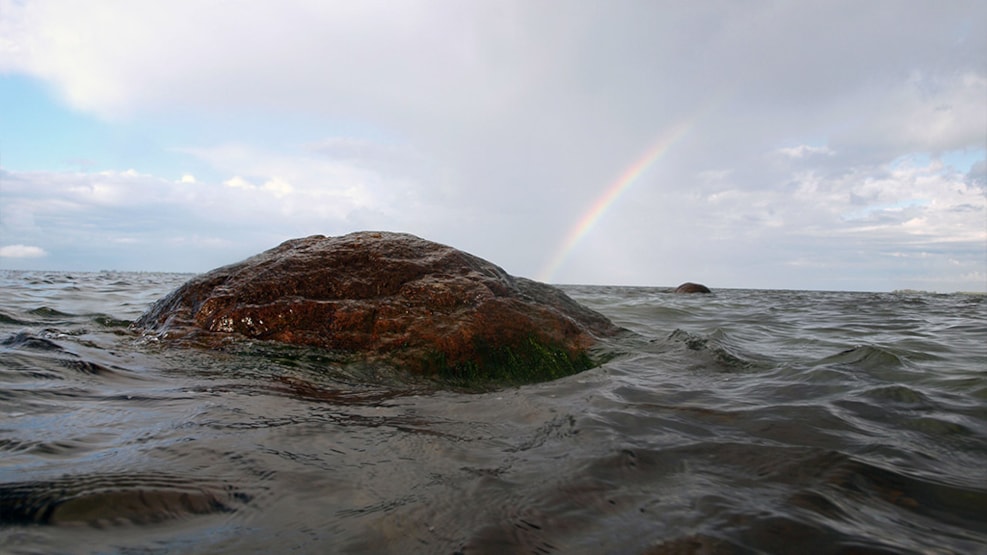
Geopark: The Siø barrow
In the shallow water a few hundred metres off the southern tip of Siø lies a long barrow from the Stone Age.
Long barrows are elongated burial mounds with a rectangular floor plan. A long barrow may contain several mounds, and several people may have been buried in the long barrows.
Today, the Siø mound is most of the time flooded with half a metre of water, but at low tide the stones are partially submerged. Some of the stones in the dyke have been removed over the years and were used, for example, when a steamship bridge was built on Siø in 1916.
In Denmark, a number of long barrows were built in the period 3800-3500 BCE, shortly after agriculture came to the country. They were precursors to the stone mounds and passage graves that were built in later periods of the Neolithic. Long barrows were often built with a wooden palisade at the eastern end and one or more wooden burial chambers.
It is often seen that long barrows were built in prominent places in the landscape, which is also the case with the long barrow at Siø. When the long barrow was built, it was located on the southernmost tip of Siø, where it has been a clear marker in the landscape for everyone who has sailed past the island. All the soil from the mound has been washed away by the sea, and today only a few of the large stones that originally delineated the mound remain.